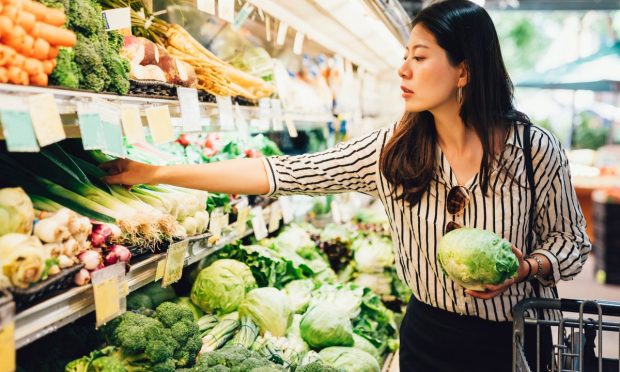Retailers Brace as 70% of US Consumers Skip Retail Purchases to Buy Groceries and Gas

RH (Restoration Hardware) CEO Gary Friedman and Kroger CEO Rodney McMullen both had it right last week when they reported their respective Q2 earnings: Inflation is taking a heavy toll on consumer spend.
It’s also creating a potential windfall if you happen to operate in a category of retail spend that’s regarded by consumers as essential.
The second-largest grocer in the U.S., Kroger, posted higher-than-expected earnings and raised its full year forecast as McMullen spoke of the grocery chain’s appeal to the value-minded shopper looking to stretch their food budget. Coupons, promotional pricing and an increase in higher-margin private label brands all contributed to a Q2 performance that soundly beat investor expectations.
Get more details: Membership Program, Automation Recharge Kroger’s Digital Growth
RH’s Friedman had a different take, bluntly stating that anyone who doesn’t think the U.S. is in a recession is “crazy.” The upscale home furnishings brand, which famously does not discount, warned of a sharp decline in sales in Q3 as the affluent consumer reallocated spend to the rising cost of essentials such as groceries. Rising interest rates, Friedman said, also dampened demand for home sales and the new home furnishings purchases that typically follow.
The Inflation Tide That Lifts the Grocery Boat
A newly-published PYMNTS study, the second in a monthly series on the impact of inflation on consumer spending, only confirms that both of these CEOs are correct.
This study of a national sample of 2,169 consumers surveyed between August 16 and August 23 finds that 70% of consumers are reducing their spend on retail purchases to pay for the rising cost of essentials such as groceries and gas. Although the cost of gasoline is slowly coming down from record highs in most parts of the country, the cost of feeding families has not — nearly two thirds of consumers say they expect the cost of food to continue to rise into next year.

Add to that the increased spending on childcare as more of the workforce returns to an office at least part of the time, and the PYMNTS study reflects a consumer who says they are just about tapped out. Bank of America reported last week that childcare spend had reached 2019 levels for 94% of their customers. Not surprisingly, 60% of consumers surveyed in the PYMNTS study say that the rising cost of groceries and gas, along with the consideration of other essential expenses such as increases in mortgage and rent payments and childcare, has stretched their household budgets to the max — they are unable to withstand any further increases.
Related: As Prices Rise, Consumers Shift to Meals at Home
The purchasing power of the U.S. consumer has shrunk by 12% over the last two years, and the reallocation of the consumer’s household budgets toward essentials such as food, shelter and fuel leaves little room for much else.
Grocery stores are the big winners, as the study finds that 78% of consumers say they plan to eat more at home more often to save money, and 62% say they will reduce spend on unnecessary grocery spend. For consumers that means trading down, as well as cutting out the “splurge-worthy” things that filled their baskets last year.

It’s the Recession, Stupid
The consumer’s perspective of a recession is shaped by what’s going on within their own world. Despite attempts by the Fed to put a positive gloss on the state of the U.S. economy, just like the RH CEO, three in ten Americans also think that the U.S. is already in a recession. Nearly half (48%) say that the U.S. will be in a recession by the time the calendar turns the page to 2023.
According to this PYMNTS report, wage increases have failed to keep pace with the high cost of inflation for 85% of U.S. consumers, and more than half feel as though their financial situation is worse than it was just one year ago. Hardest hit, unsurprisingly, are lower-income consumers, as well as those who are living paycheck to paycheck and struggling to pay their bills – 79% of whom say their financial situation has deteriorated precipitously year over year. Two thirds of consumers believe that it will take until mid-2024 before inflation moderates at the 2% level.

What a Difference a Year Makes
Consumers who participated in the latest PYMNTS study say they have an increased sense of “anxiety” and “uncertainty” about the future. Budgeting is now something consumers say they do more often because of their new focus on higher prices. They also told PYMNTS that their savings capacity is diminished, their credit card use is up and many are now only able to pay the minimum monthly payment. Hourly workers say they are picking up more shifts or doing side jobs to bring in extra cash.
At the same time, consumers are doing whatever they can to reduce their spend on essentials. Consumers told PYMNTS that they are starting to make tradeoffs from organic food options to “whatever I can afford.” They also say that significant price increases impact their loyalty to merchants, with 48% of consumers saying they plan to shift their spend to grocery stores with cheaper prices.
See also: Why Retailers Should Worry About Inflation but Dread the Wealth Effect
Consumers also told PYMNTS that they are vacationing closer to home — road trips rather than plane trips, and fewer trips to visit family and friends. They’re also looking more for sources of free entertainment then paid activities and planning their shopping excursions more carefully, reducing the number of once-spontaneous trips to the store.
One middle-income consumer summed it up for PYMNTS this way: “I’m poor now.”
To learn more, download the full report: Consumer Inflation Sentiment: Inflation Slowly Ebbs, but Consumer Outlook Remains Gloomy
